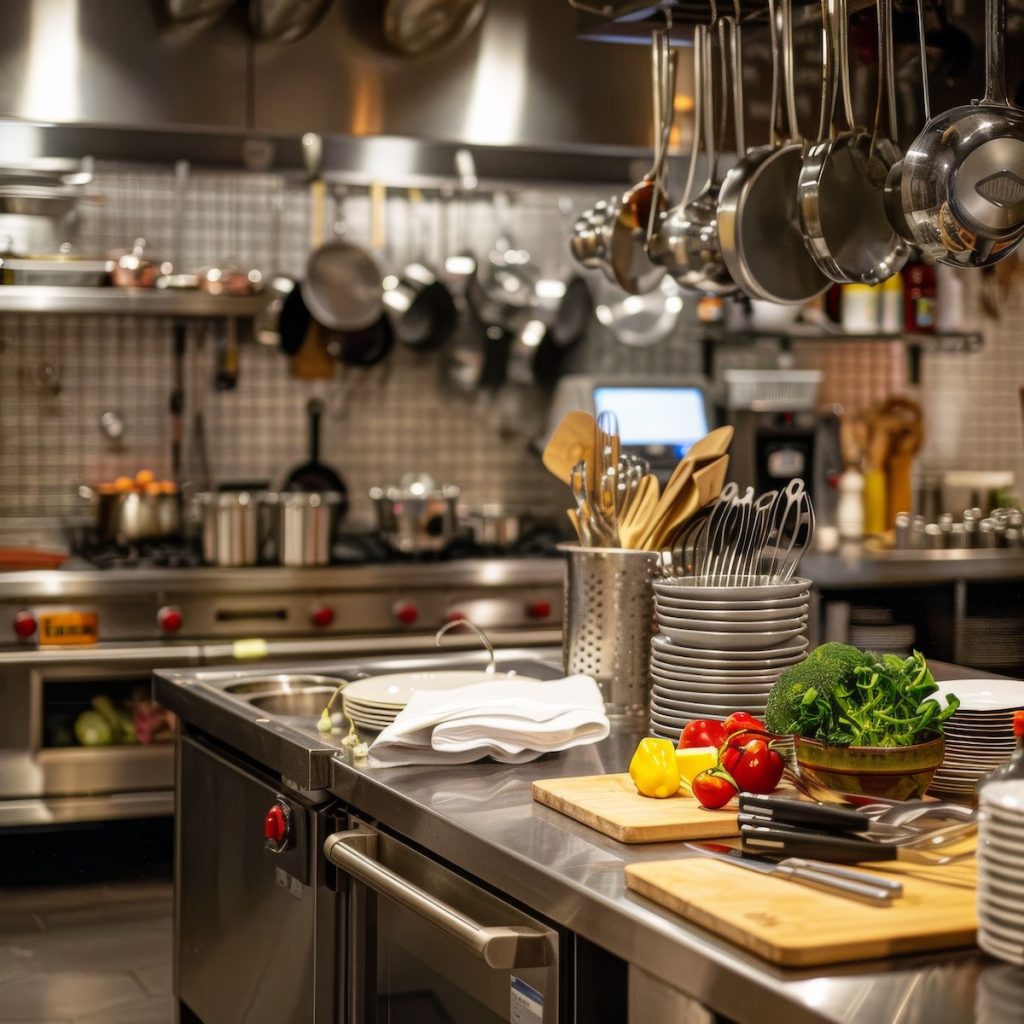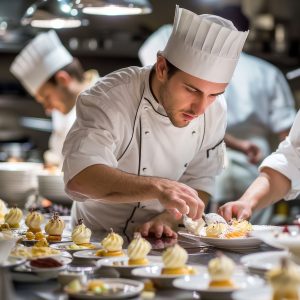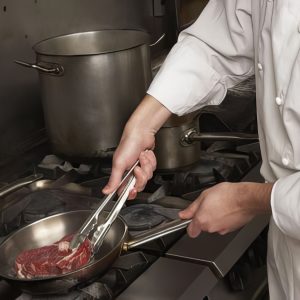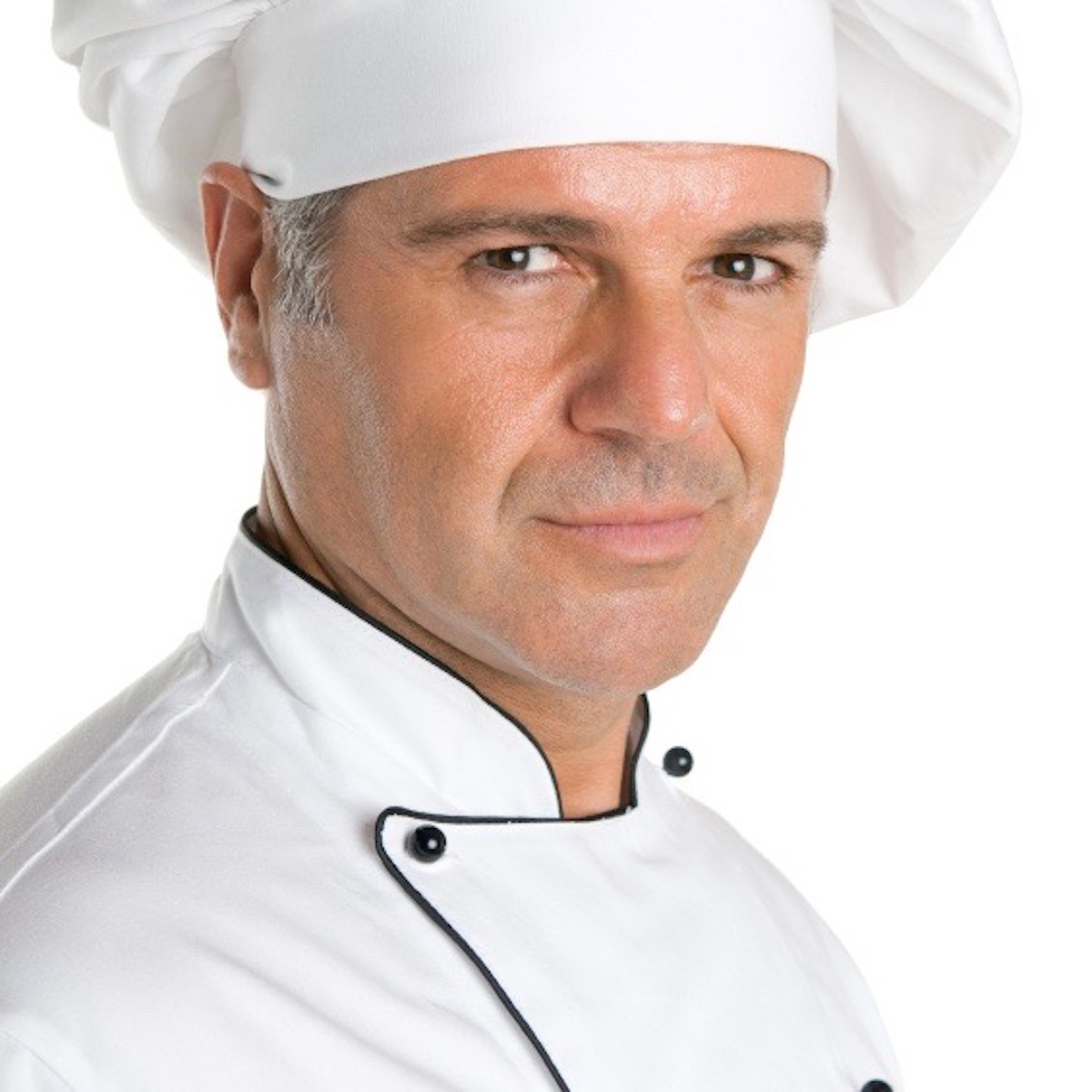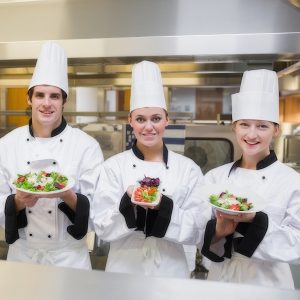Make Sure You Take A Tour of the Culinary School Kitchen
When narrowing down your list of culinary school options, one of the first things anyone will tell you is to visit each campus and decide which one feels right for you.
You can learn a lot about a school by how warmly they welcome your visit and how open they are to showing you around. The best schools offer tours, let you sit in on classes, invite you to check out their housing facilities (if available), and, most importantly, welcome you to explore the kitchens.
No matter where you attend culinary school, you’ll spend most of your time in the kitchens. Culinary programs focus on hands-on learning, and many schools even hold lectures in the kitchen, allowing students to sit at their stations and practice as the instructor teaches.
Since so much of your time will be spent in the kitchen, it should be the first stop on your campus tour and play a significant role in your decision-making process. When you visit, look for:
Clean and Spacious Workstations
The workspaces in a culinary school kitchen should be clean and spacious for several vital reasons. First, a clean environment is essential for food safety. Keeping workstations free of dirt, bacteria, and contaminants allows students to practice proper sanitation and prevents cross-contamination.
Second, a spacious kitchen enables students to work efficiently and safely. Culinary students often need room to move, handle multiple tasks, and use various tools. A cramped workspace can cause accidents, spills, and mistakes, which interfere with the learning process.
Lastly, a well-organized kitchen creates a better learning environment. Students can focus on their skills without distractions. When each student has enough space, they can practice techniques like chopping, sautéing, and plating without feeling rushed. This leads to better hands-on learning and increased confidence.
Updated and Commercial Kitchen Appliances
Culinary school kitchens need to be updated, commercial-grade appliances for several key reasons. First, modern, high-quality equipment ensures students are learning on tools they will use in professional kitchens. This gives them an advantage when they enter the workforce, as they will be familiar with industry standards.
Newer appliances also offer better functionality, efficiency, and safety. They are often more energy-efficient, faster, and more reliable, helping students work effectively. Commercial-grade equipment is built to endure heavy use, providing the durability and performance found in professional kitchens.
Using state-of-the-art appliances also helps students develop skills in a realistic setting. They learn not only techniques but also how to manage equipment and troubleshoot problems. Updated appliances also offer a wider range of features, letting students explore different cooking methods and cuisines with confidence.
The Complete Culinary Process
In the culinary world, several steps exist between receiving ingredients and plating the final dish. Ensure the kitchen is equipped to handle the entire process, from prep work to the dining experience. You need skills in all areas because you never know if you’ll be hired as a sous chef or fry cook after graduation.
Mass Production Capabilities
If you plan to work in a large-scale production setting, such as a bakery, catering company, or industrial food production plant, make sure the school offers training in mass production. Cooking one dish is vastly different from cooking five hundred, so you should gain experience in both areas.
While many factors will influence your final culinary school choice, the kitchen should be near the top of your list. You can only be as well-trained as the materials you learn on, and the kitchen will soon become your home for four to eight hours each day.
Is A Culinary Career Right For Me?

